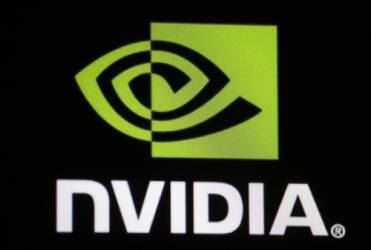NVIDIA, the undisputed leader in AI computing, delivered another quarter of exceptional growth while navigating the complex transition to its next-generation Blackwell architecture. Despite beating market expectations across key metrics, the company's guidance suggesting moderating growth rates has sparked discussions about the sustainability of its current growth trajectory and valuation levels, which has led to slight decline in premarket trading. Also the implied one day volatility based on historical data for day after earnings is equal to 4.89%.

Q3 FY25 Results vs Estimates
- Revenue: $35.1 billion vs estimate $33.1 billion
- Adjusted EPS: $0.78 vs estimate $0.75
- Data Center Revenue: $30.8 billion vs estimate $29.14 billion
- Gaming Revenue: $3.3 billion vs estimate $3.06 billion
Overview of Q3 Performance
NVIDIA's third quarter results demonstrated continued strong momentum, with revenue surging 94% year-over-year to $35.1 billion. The data center segment remained the primary growth driver, expanding 112% year-over-year to $30.8 billion, while gaming revenue grew 15% to $3.3 billion. Net income more than doubled, increasing 111% year-over-year to $19.31 billion, reflecting the company's ability to maintain strong profitability despite massive scale expansion.

Earnings vs Estimates. Source: Bloomberg
Blackwell Transition: Opportunities and Challenges
The upcoming transition to the Blackwell architecture represents both a significant opportunity and a near-term challenge. While initial shipments are scheduled to begin in Q4 2024, NVIDIA has acknowledged supply constraints that could persist for "several quarters" into fiscal 2026. This constraint, while potentially limiting near-term growth, also suggests sustained strong demand that could extend the current AI computing upgrade cycle.
Data Center Dominance and Market Evolution
The data center segment continues to demonstrate exceptional strength, now representing nearly 88% of total revenue. This concentration reflects both NVIDIA's dominant position in AI computing and the massive scale of enterprise AI adoption. The segment's sequential growth rate of 17% suggests a natural moderation from previous quarters' explosive growth, though still maintaining robust expansion levels. The demand coming from data center expansion could be much higher for NVIDIA in the next few years.
Expanding Ecosystem and Strategic Partnerships
NVIDIA has significantly expanded its partnership network, announcing collaborations with Foxconn to build Taiwan's fastest AI supercomputer, global consulting firms including Accenture and Deloitte, major technology providers such as Lenovo, Google Cloud, and T-Mobile, automotive leaders including Volvo and Toyota, and telecommunications giants Ericsson, Nokia, and SoftBank. These partnerships demonstrate NVIDIA's success in expanding beyond pure hardware into comprehensive AI solutions and platforms.
Strategic Priorities and Future Outlook
Looking ahead, NVIDIA's strategic focus centers on managing the critical transition to Blackwell architecture, expanding into new markets including automotive (+72% YoY) and robotics, strengthening its software and platform offerings, developing new revenue streams in quantum computing and digital twins, and maintaining technological leadership amid increasing competition.
Market Challenges and Competitive Landscape
NVIDIA faces several key challenges in managing supply constraints during the Blackwell transition, increasing competition from AMD and in-house chip development by hyperscalers, maintaining margins amid massive scale expansion, justifying premium valuation levels as growth moderates, and navigating geopolitical risks, particularly regarding Taiwan.
Investment Perspective
While NVIDIA's fundamental performance remains exceptional, investors are grappling with two key questions: the sustainability of current growth rates as the base effect becomes more challenging and the appropriate valuation multiple given moderating growth and increasing competition. The company's sustained leadership in AI computing and expanding ecosystem provide strong support for continued growth, though perhaps at more moderate levels than seen in recent quarters. The successful execution of the Blackwell transition will be crucial for maintaining NVIDIA's technological edge and market position.
Valuation
We based our projections on historical averages and company projections. This results in a 45% revenue growth and a 60% operating margin across the 5-year forecast. Considering the substantial influence of terminal value in DCF analysis, especially for shorter forecast periods, we’ve applied a conservative 5.5% revenue growth and a reduced 11% terminal WACC (down from the 13.5% used in forecast years).
Under these assumptions, our model suggests an intrinsic value of $171.5 per share, indicating an upside of 15.55% to current share price. It’s important to note the high sensitivity of DCF-derived intrinsic values to input assumptions. Below, two sensitivity matrices illustrate different Operating Margin and Revenue Growth scenarios, as well as Terminal WACC and Terminal Revenue Growth variations.

Source: Bloomberg Finance LP, XTB Research

Source: Bloomberg Finance LP, XTB Research
To assess Nvidia’s performance relative to its peers, we've created a peer group of five companies with growth potential and pace: Meta, Microsoft, AMD, Broadcom and Palantir. Nvidia stands above the peer group average across several key metrics, as indicated by the mean, median, and cap-weighted multiples we calculated.
Three separate valuations for Nvidia, based on these multiples, show mixed results. While the P/E and forward P/E ratios suggest the stock might be undervalued, the P/Bv and P/S ratios indicate potential downside. This combination of metrics suggests Nvidia could present an attractive opportunity compared to its peers, depending on the valuation approach. Palantir stands out as a clear outlier, outperforming Nvidia on nearly all valuation multiples. Based on Palantir's multiples, Nvidia would appear deeply undervalued.

Source: Bloomberg Finance LP, XTB Research
Recommendations: Nvidia has 76 recommendations, with 68 "buy" and highest price of $206, 7 “hold” and one “sell” with the price of $65.5. The 12-month average stock price forecast is $163.28, implying an 11.9% upside potential from the current price.
Technical analysis:
The stock is trading above the 23.6% Fibonacci retracement level, likely serving as the first support. Bears may target the 38.2% Fibonacci retracement level and the 100-day SMA if the decline continues. Bulls aim to push toward a new all-time high. RSI shows a slow bearish divergence but remains elevated, while MACD signals a subtle sell indication. Source: xStation

Daily Summary: CPI down, Markets Up
Procter & Gamble: After Earnings
"Mad Max" mode - Is Tesla in trouble?
Intel’s turnaround is showing results


